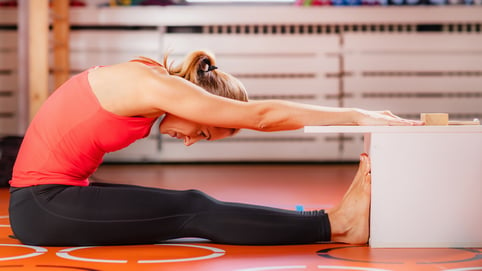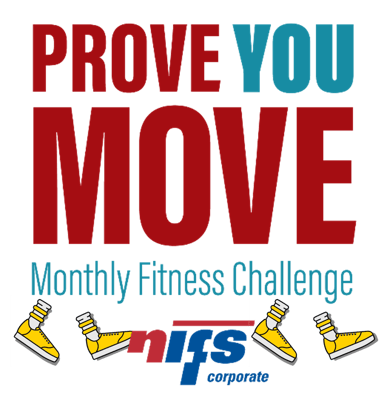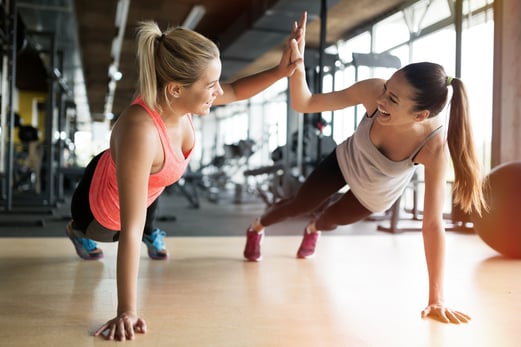 One of the best things you can do when it comes to tracking your progress with fitness is a fitness assessment. A fitness assessment is roughly a 30–60-minute consultation with a health and fitness professional where you are tested on the 5 components of fitness: body composition, muscular strength, muscular endurance, flexibility, and cardiovascular endurance. Some assessments may also test for balance, mobility, or more sports performance biased like power and agility. But for the sake of this article, we are focusing on the 5 components of fitness.
One of the best things you can do when it comes to tracking your progress with fitness is a fitness assessment. A fitness assessment is roughly a 30–60-minute consultation with a health and fitness professional where you are tested on the 5 components of fitness: body composition, muscular strength, muscular endurance, flexibility, and cardiovascular endurance. Some assessments may also test for balance, mobility, or more sports performance biased like power and agility. But for the sake of this article, we are focusing on the 5 components of fitness.
Generally, a health professional will want a client to go through an assessment before they start any form of a fitness program so they can best create a program that is going to work for them based on their goals and outcomes from the assessment. After the initial assessment it would be a good idea to reassess your progress 3-6 months later to see if you made any progress and how you can continue to improve. Fitness assessments are also scored and evaluated based on your age and gender. A health professional will sit down with you after your assessment and compare the results to normative data or age-adjusted charts to show where you should be based on data that has been researched to be accurate.
Why Are Fitness Assessments Important?
- They serve as a baseline measurement that a personal trainer or health specialist can use to compare results over a period of time.
- Serves as a source for a health specialist to build an exercise and/or nutrition program around.
- Evaluates strength, endurance, cardiovascular health, flexibility, and body composition that may shed light on how you can best reduce the risk for injury.
- Can increase motivation for a client to participate in an exercise program.
- Build trust between a client and health specialist that can cultivate great relationships.
3 Ways You Can Benefit from a Fitness Assessment?
- Fitness Assessments Give You More Information Than a Scale.
One of the biggest benefits of a fitness assessment is they give you more information to use than your generic bathroom scale. This is not to say tracking your weight isn’t valuable, because it definitely has its place, but a fitness assessment will allow you to see how you perform from a physical perspective. There are more data points that show more change over time which could lead to longer involvement in a fitness program and healthy habits.
- The Assessment Will Help You Set Goals.
With the ability to dig deeper into learning more about your body via the assessment, you can create more specific goals that are going to beneficial for your overall health and longevity. This will allow you to have more intent with your fitness program, so you have something more specific to work towards.
- The Assessment Will Help Keep You Safe.
There are so many ways to program for different types of people. A fitness assessment allows a health fitness specialist find out what exercises they can incorporate and what exercises may not be best for an individual. The assessment will also uncover any underlying issues that could be made worse by engaging in a fitness program.
Before starting an exercise program, a fitness assessment can be really beneficial in measuring the 5 components of fitness: muscular strength, muscular endurance, cardiovascular health, flexibility, and body composition. The results from the assessment will also help a health fitness specialist design your individualized fitness program. Many benefits come from these assessments and can help uncover more about your body and how to keep it safe and live a healthier life. Now that you have more information on fitness assessments, reach out to your local fitness center staff and get your appointment scheduled!


 This month our corporate members are encouraged to pick a goal of 5,000 or 10,000 steps per day to kick of July’s Prove YOU Move Fitness Challenge. Some people cringe at the thought of 10,000 steps per day, but it isn’t just intentional exercise. Have you ever considered how many steps you actually take in a given day? How often are you moving throughout the office or your house? You might actually surprise yourself. Most phones have a Health App, or you can add a step tracker to your smart phone. If you keep your phone on your body throughout the day, it will calculate your movement and track your steps. As you start digging into your phone, don’t get down on yourself when you discover how little you possibly move, remember your phone must be on your body throughout the day to get the best estimate.
This month our corporate members are encouraged to pick a goal of 5,000 or 10,000 steps per day to kick of July’s Prove YOU Move Fitness Challenge. Some people cringe at the thought of 10,000 steps per day, but it isn’t just intentional exercise. Have you ever considered how many steps you actually take in a given day? How often are you moving throughout the office or your house? You might actually surprise yourself. Most phones have a Health App, or you can add a step tracker to your smart phone. If you keep your phone on your body throughout the day, it will calculate your movement and track your steps. As you start digging into your phone, don’t get down on yourself when you discover how little you possibly move, remember your phone must be on your body throughout the day to get the best estimate.
.jpg?width=401&name=Woman%20running%20in%20snow%20-%20GettyImages-894281874%20(1).jpg)

